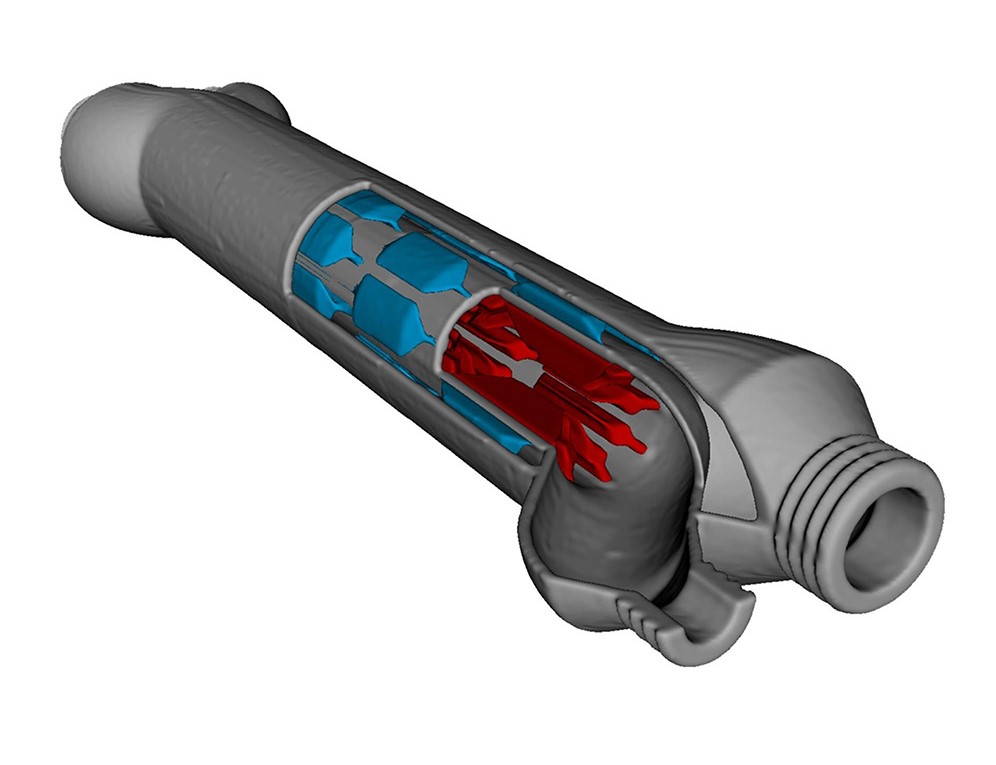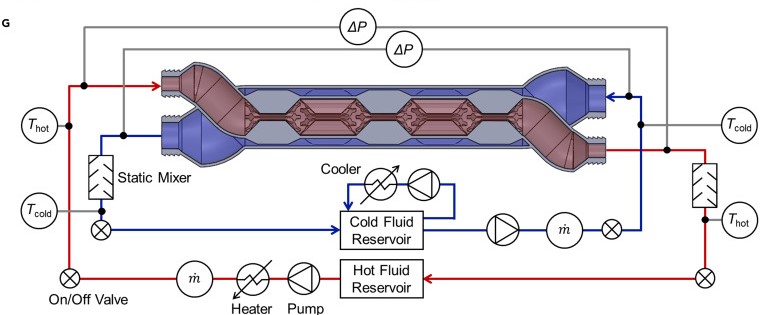The 2021 3D Printing Industry Awards shortlists are now open for voting until the 20th of October. Cast your votes here.
A team of researchers from the University of Illinois at Urbana-Champaign has used 3D printing technology to produce a next-generation ultra-compact heat exchanger, achieving performance increases of up to 2000%.
To enable the novel geometry, the engineers developed their own purpose-built 3D heat exchanger design software with topology optimization functionality. The program is designed specifically to optimize existing heat exchanger designs to maximize heat transfer while minimizing part weight, which could have major implications for industries such as energy, electronics, and aerospace.
“We developed shape optimization software to design a high-performance heat exchanger,” explains William King, professor of Mechanical Science and Engineering and co-leader of the study. “The software allows us to identity 3D designs that are significantly different and better than conventional designs.”

The need to advance heat exchangers
Heat exchangers are simply used to transfer thermal energy from point A to point B. They’re crucial in most major industries and are featured in almost every complex system that generates heat. This includes power generation systems, transportation, oil & gas processing, water desalination, and thermal management for consumer electronics.
With millions of heat exchangers in use out in the world today, their performance and efficiency have become more important than ever when it comes to global sustainability and reducing energy consumption. We need high surface area devices that promote efficient heat flow while also being compact and lightweight. In some industries like aerospace, this combination is particularly important as part size and mass have a direct impact on system performance, range, and costs.
Unfortunately, according to the Illinois researchers, heat exchanger designs haven’t changed all that much over the past few decades. Limited by conventional manufacturing technologies, we haven’t been able to integrate complex structures like internal channels that optimize heat flow. However, with metal 3D printing now being a viable option, 3D heat exchanger designs that were previously assumed to be impossible can be fabricated with ease. All that was needed was a dedicated software tool to design the new, more efficient devices.
An optimized tube-in-tube heat exchanger
Using its 3D design software, the team studied a special type of heat exchanger called a tube-in-tube exchanger, which is often found in drinking water systems and building energy systems. As the name suggests, tube-in-tube exchangers feature an inner tube nested inside an outer tube. The Illinois design also had a set of integrated fins on the inside of the tubes – an internal design feature only made possible by 3D printing technology.
Once the optimized design was finalized, the engineers printed the heat exchanger using AlSi10Mg and performance tested it in a lab environment. The device was found to have a power density of 26.6 W/cm3 and a specific power of 15.7 kW/kg, which is reportedly around 20x higher than that of comparable commercial heat exchangers.
“We designed, fabricated, and tested an optimized tube-in-tube heat exchanger,” said Nenad Miljkovic, associate professor of Mechanical Science and Engineering and co-leader of the study. “Our optimized heat exchanger has about 20 times higher volumetric power density than a current state-of-the-art commercial tube-in-tube device.”

Further details of the study can be found in the paper titled ‘Ultra-power-dense heat exchanger development through genetic algorithm design and additive manufacturing’. It is co-authored by Hyunkyu Moon, Davis McGregor, Nenad Miljkovic, and William King.
Earlier this month, researchers at RMIT University, Australia, developed a set of next-generation 3D printed heat exchangers powered by jet fuel. The 3D printed catalysts, as they’re called, are metal heat exchangers coated in synthetic minerals known as zeolites. Using jet fuel as a coolant, they could be the key to solving one of hypersonic flight’s biggest issues: overheating.
Elsewhere, GE Research, the R&D wing of American conglomerate GE, recently successfully tested its own novel 3D printed heat exchanger prototype at temperatures of up to 900°C. Designed alongside the University of Maryland and Oak Ridge National Laboratory (ORNL), GE Research’s subscale thermal regulation device features a unique grape-like geometry that provides it with extreme heat and pressure resistant qualities.
Subscribe to the 3D Printing Industry newsletter for the latest news in additive manufacturing. You can also stay connected by following us on Twitter, liking us on Facebook, and tuning into the 3D Printing Industry YouTube Channel.
Looking for a career in additive manufacturing? Visit 3D Printing Jobs for a selection of roles in the industry.
Featured image shows a rendering of the optimized 3D printed heat exchanger. Image via University of Illinois.



